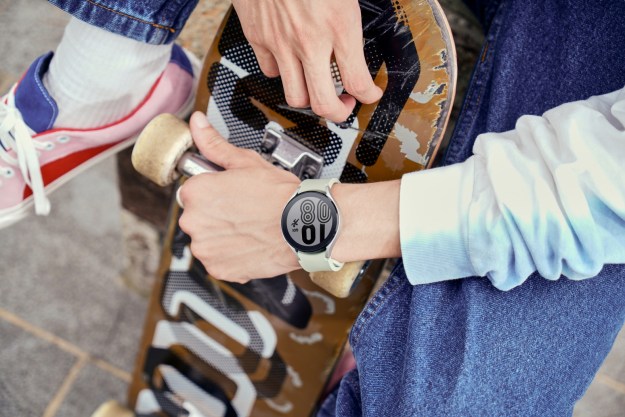Sensoria works by going straight to the source, leveraging smart socks to track its wearers’ steps and cadence, and then delivering activity-monitoring accuracy by way of a newly released walking app, Sensoria Walk.
Related Offer: Run smarter with Sensoria Fitness Socks and Anklet
“According to a 2013 research study published by the Mayo Clinic, there is a direct correlation between activity and faster recovery time,” said Davide Vigano, CEO and co-founder of Sensoria. “However, most wrist-worn wearable devices cannot accurately detect the activity of people with limited mobility, such as elderly patients or patients recovering from surgery or using a walker. Sensoria Walk aims to deliver a more accurate tool for patients and caregivers to track and evaluate their recovery progress.”
Doing away entirely with the notion of wristbands, Sensoria instead depends upon its textile pressure sensor technology, which is embedded directly into its socks and then connected to an electronic anklet. This, the company says, allows for more accurate activity monitoring, even with slow cadences, short strides, or use of walking aids. And with the new Sensoria Walk app, both patients and their caregivers can see progress history, goals, total activity time, and other analytics.
Sensoria also maintains high hopes for its technology’s benefits when it comes to patients with neurological diseases. Parkinson’s patients are often encouraged to engage in physical activity to help with their balance, gait, and overall motor skills, and tools like Sensoria smart socks and its companion app could help doctors keep closer tabs on their patients.
“In the past, people have used diaries to track activity, and people tend to overestimate their physical activity,” said Dr. Sujata Pradhan, a professor of rehabilitation medicine at the University of Washington. But with more precise information and the ability to detect changes in patients’ gaits or overall activity habits, doctors may be able to better diagnose the onset of these degenerative diseases.
“People are usually referred for rehabilitation only when they have difficulty maintaining their balance or start falling,” Pradhan said. “Usually, overt clinical deficits in balance and walking appear later in disease progression. If we bring more awareness to these subtle early symptoms, people will start referring to physical therapy earlier.”
Sensoria Walk is now available for iOS download in the App Store. For more information, visit www.sensoriafitness.com.
Download Sensoria Walk for iOS
Editors' Recommendations
- This new Canon photo app will help you decide which pics are worth keeping
- Dragon Quest Walk is a new location-based mobile AR game similar to Pokémon Go
- Nike Fit aims to help you slip into your new sneakers more easily


